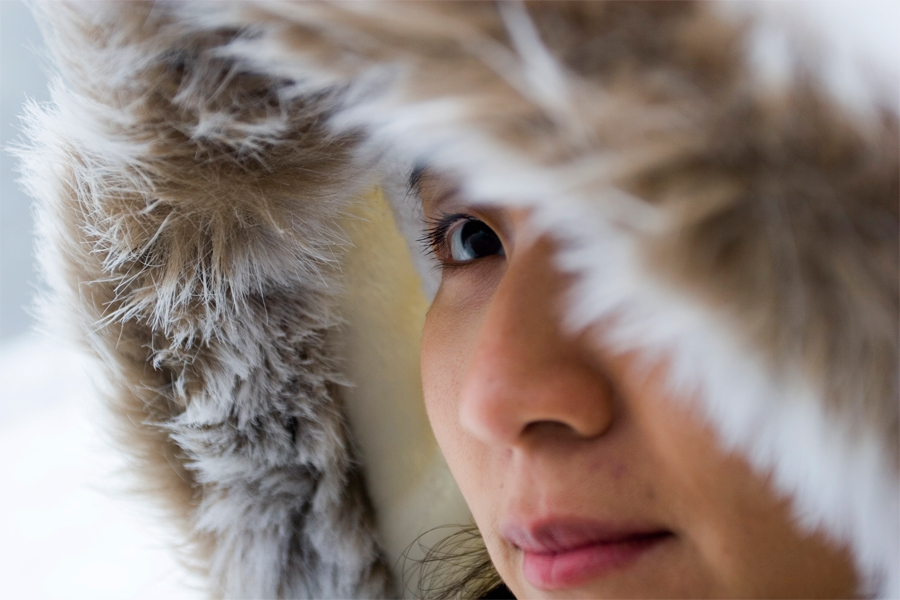
Health emergencies in Indigenous communities in Canada: Then and now
Pandemics and diseases loom large in the history of Indigenous groups in Canada. Past outbreaks have had devastating outcomes, fueled by colonial policies and persistent inequalities.
Today, Indigenous communities are both receiving and giving support to counter COVID-19. But it is important that the current public health response acknowledges their history. By examining past pandemics, we can better understand how Indigenous communities are experiencing the current crisis.
Diseases and European contact
During the periods of early contact, European settlers spread novel pathogens such as smallpox throughout the Americas. Indigenous groups had no immunity to these diseases. Estimates show that Indigenous populations in North America may have declined by over 50 per cent in Arctic regions due to European contact. Declines along the Northwest Coast could have been as high as 90 per cent. Estimates vary and identifying the role of disease in these figures is difficult, but there is no question that the impact was significant.
Colonial oppression of Indigenous groups worsened the effects of these new diseases. Communities were forced out of their traditional social and family structures. Settler lawmakers banned many traditional healing practices. And by the end of the 19th century, Indigenous peoples endured starvation, forced relocations, the loss of community and family, imposed religions, and violence.
The Spanish flu of 1918–20
No one had natural immunity when the Spanish flu spread across the globe after the First World War. But for Indigenous peoples, the systemic challenges they faced once again worsened the impacts. Higher rates of tuberculosis in Indigenous communities, for example, made the flu more deadly.
Canada’s public health system lacked the capacity it has today, but our government’s response—even by early 20th century standards – was prejudicial. Year over year, the Department of Indian Affairs reported the exact same number of deaths from the flu in Indigenous peoples in British Columbia between 1917 and 1919—an impossible statistical claim. Even with the limited data available, we know from the National Archives of Canada that in 1919, Indigenous peoples in British Columbia died from the flu at a rate of over seven times the non-Indigenous rate. In addition, public health resources were often prioritized for non-Indigenous populations.
The heavy health burden of H1N1
In 2009–10, the H1N1 influenza spread to 214 countries, including Canada. As reported to the Public Health Agency of Canada, Indigenous peoples accounted for 28 per cent of all hospital admissions and 18 per cent of deaths in the first wave. With Indigenous peoples making up 4 per cent of Canada’s population at the time, this was a stark over-representation.
As in previous pandemics, the socioeconomic inequalities facing Indigenous peoples increased the impacts of H1N1. These inequalities remain part of the current context in many Indigenous communities—as do their risks. Household crowding makes it easier for viruses to spread from one person to another. Limited access to health services in small or remote communities prolongs the time it takes to get appropriate care. And high rates of pre-existing health conditions increase the risk of a severe infection.
The federal government made several missteps in their public health response to H1N1. They delayed sending alcohol-based hand sanitizers to communities, believing residents might consume it. They also sent body bags to several Manitoba First Nation reserve communities when those communities asked for medical supplies.
For many Indigenous communities, this botched public health response signaled a need for change. It was time to develop pandemic plans that would work for their communities. It was time for location-specific and culturally appropriate responses.
COVID-19: Moving forward
Today, Indigenous communities continue to cope with many of the socioeconomic disadvantages that made them vulnerable to previous pandemics. But many communities are successfully drawing on their strengths and resilience to respond to COVID-19.
The chief of Pasqua First Nation in Saskatchewan made international headlines when he prepared his community for a lockdown. He did this weeks before the Canadian government recognized the novel coronavirus as a serious threat. At least 18 First Nations in Northeastern Ontario proactively closed their borders to outsiders. They felt they did not have the necessary resources to fight Covid-19.
Indigenous leaders across the country are stepping up to support their people. Communities have supplied food hampers to residents. They have also provided financial support to residents who chose to go out on the land as a social distancing measure. And coronavirus hotlines have been set up to deliver medical and social support throughout communities.
Even as some regions start to reopen, there has been a recent rise in infection rates in some Indigenous communities. Governments must ensure that communities have the broader resources and funding they need. But they must also stay committed to developing public health responses in partnership with Indigenous communities—and they must not ignore history. They must remember the past experiences, both historical and recent, that Indigenous communities have with pandemics, and the social injustices that surrounded them. It will help support the resilience of Indigenous communities as they confront health crises, now and in the future.




